October 23 to 31, 2019
MISSION ENCOR 2019 – RED SEA
- Biodiversity, Deep corals, Global warming, Red Sea
Study of the nutritional ecology of mesophotic corals (ENCOR)
A mission to study the deep corals of the Red Sea with the Centre Scientifique de Monaco (CSM) and the Institut Interuniversitaire d’Eilat (IUI).
Deep corals
Unlocking the secrets of the Red Sea
In the Gulf of Aqaba, many coral reefs are found in the twilight zone, known as the mesophotic zone, located between 60 and 150 meters depth, between light and total darkness.
Little is known about the biology of these deep, inaccessible reefs.
In the northern Red Sea, they are particularly resistant to global warming, making them potential refuges for corals in the future.
Hence the importance of this research.
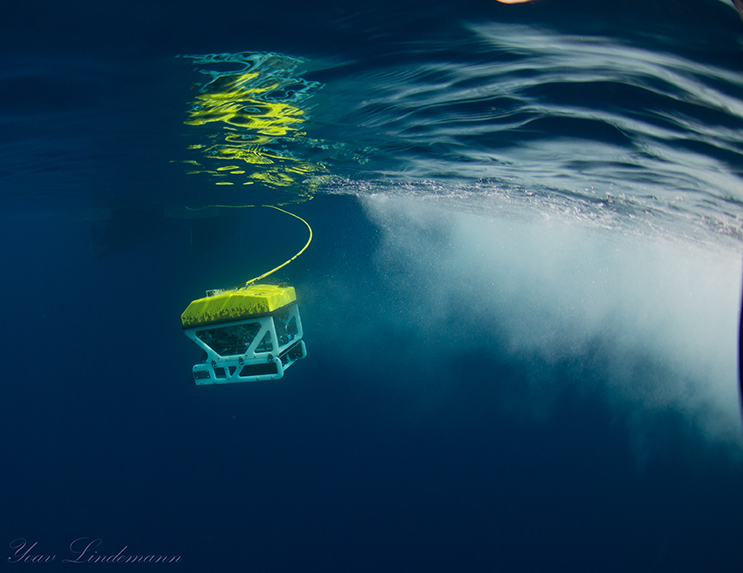
The mission in video
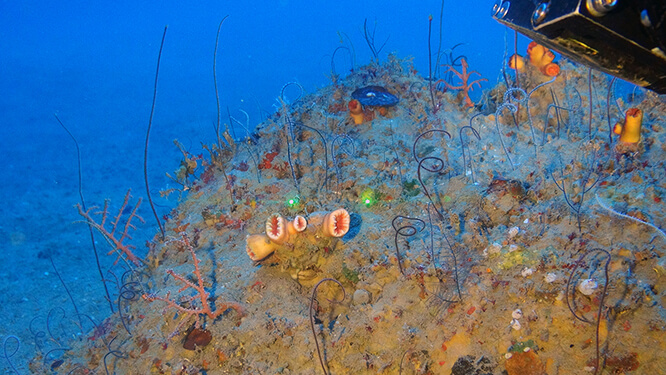
One mission, four objectives
- Establish an initial state of the biodiversity of Eilat’s deep reefs, so as to be able to assess any subsequent changes in this biodiversity.
- Gain a better understanding of the physiology of deep-sea corals, and in particular their resistance to temperature increases.
- Understand how these corals, especially those dependent on photosynthesis, can survive in such deep, low-light environments.
- Search these deep reefs for new, as yet undescribed species.
The ROV, an essential tool
The ROV(Remotely Operated Vehicle) is equipped with an arm for coral sampling, powerful lighting and high-definition cameras.
It is a robot controlled remotely by an operator.
It can reach depths of 1,000 m.
During this mission, scientists explored an area of between 60 and 150 meters.
The images recorded are invaluable for mapping the biodiversity present at these depths.
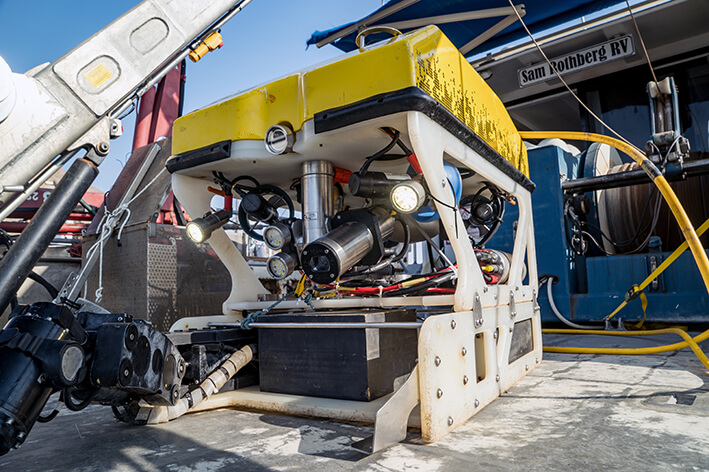
ROV images
The Gulf of Aqaba, an ideal study site
The topography of the Gulf of Aqaba is unique for its depth, 800 metres at its center, and for its narrowness.
The mesophotic reefs are very close to the coast, making them easily accessible for scientific study.
During the mission, samples collected at sea during the day were handed over to the shore team at the end of the day.
This enabled real-time measurements to be taken, such as the observation of coral photosynthesis and respiration.
Gulf of Aqaba.
Eilat.
The proximity of deep reefs facilitates their study.
©Christine Ferrier Pagès.
CSM/Explorations de Monaco
Measurements of respiration and photosynthesis.
Working with blue light avoids stressing corals collected at depth.
Marcos Schonholz.
Explorations in Monaco.
The ROV's mechanical arm for coral sampling in action at a depth of 92 meters.
IUI/Explorations de Monaco.
Handling the ROV on deck.
Marcos Schonholz.
Monaco Explorations
The oceanographic vessel Sam Rothberg at sea.
Christine Ferrier Pagès.
CSM/Explorations de Monaco.
Onshore facilities to receive samples collected at sea.
Renaud Glover.
CSM/ Explorations de Monaco
Location
They said
"We know very little about these deep-water reef systems, but they may be very important for the survival of coral reefs in the face of global climate change."
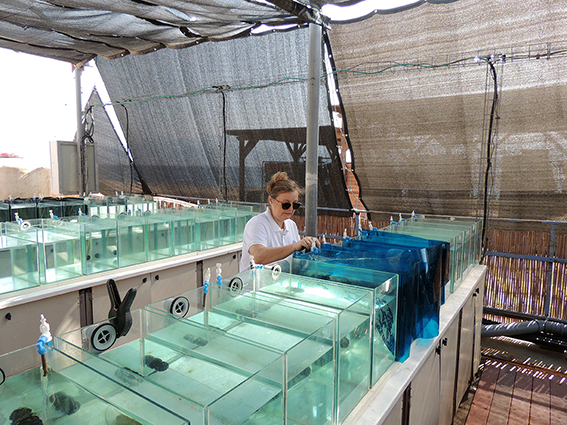
"This is the first time these deep-water coral reefs have been studied in the Red Sea."
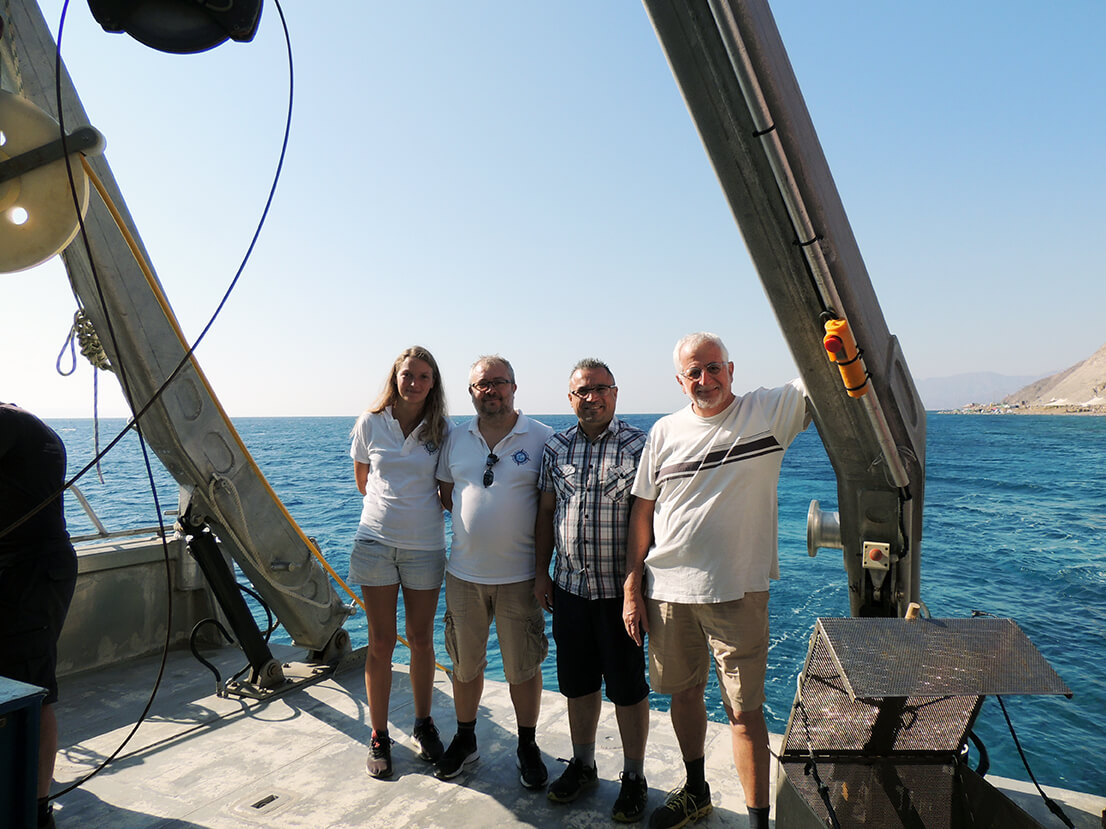
"In many cases, we've collected specimens that are new to science or, at the very least, new to the Gulf of Aqaba."
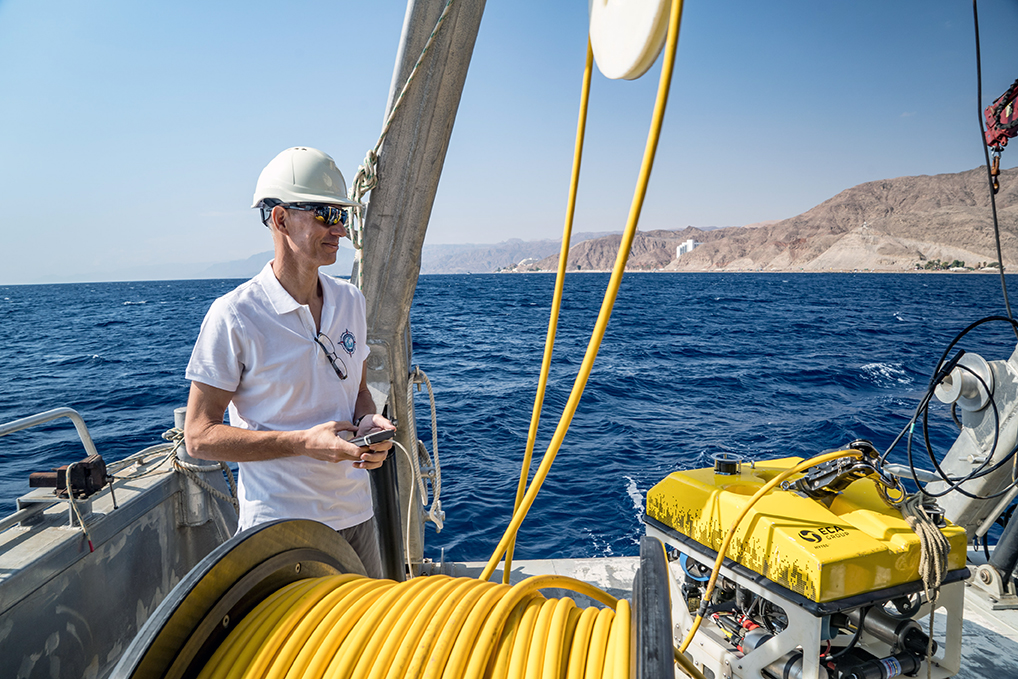
A collaborative mission
Conducted in the Gulf of Aqaba from the marine station in Eilat (Israel), the ENCOR mission, supported by Explorations de Monaco, was jointly organized by Dr Christine Ferrier Pagès, head of the coral ecophysiology team at the Centre Scientifique de Monaco (CSM), and Prof. Maoz Fine of the Inter-University Institute for Marine Sciences in Eilat (IUI), Israel, as part of a long-standing cooperation between the two entities.
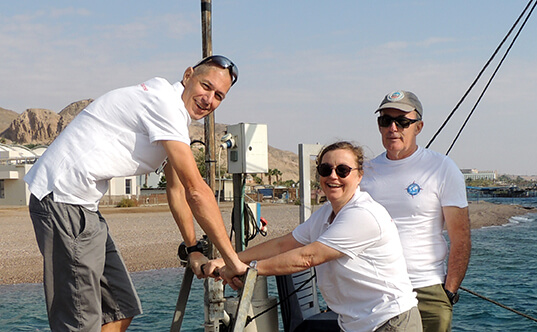
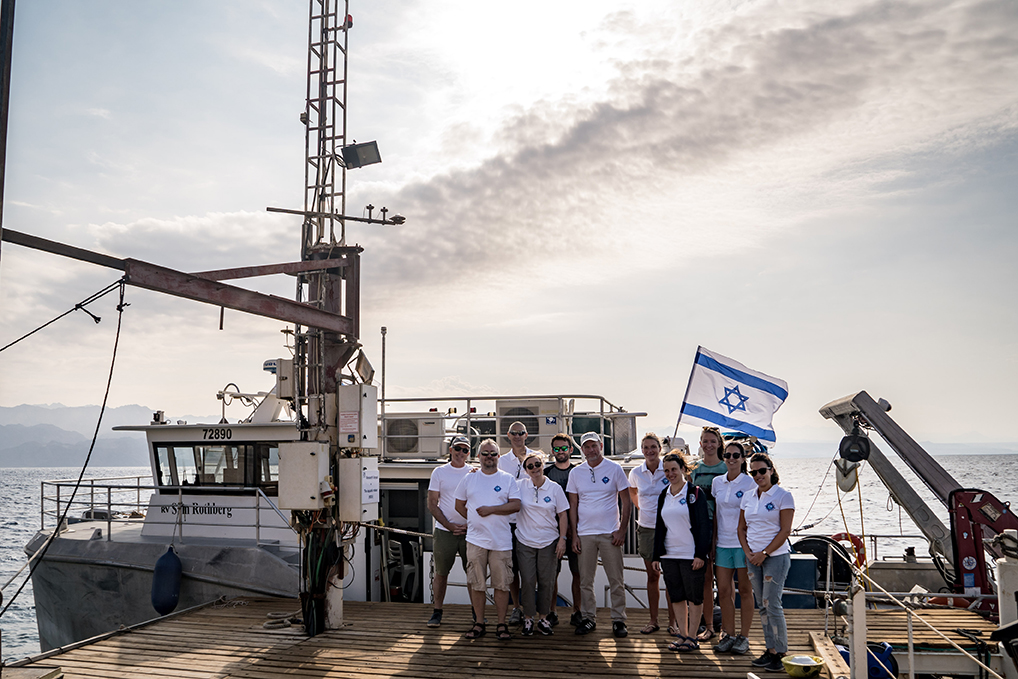
An international team
The Christine Ferrier Pages and Maoz Fine teams were supported by international experts, including Prof. Yehuda Benayahu of Tel Aviv University (Israel), Dr. Ali Al-Sawalmih, Director of the Aqaba Marine Station (Jordan), Prof. Joerg Wiedenmann of the University of Southampton (UK), Dr. Assaf Zvuloni and Dr. Assaf Habari of the Eilat “Coral Beach Nature Reserve”.
- Dr Christine Ferrier-Pagès, Research Director, Coral Ecophysiology and Ecology Laboratory
- Dr Renaud Grover, Research Manager,
- Dr Vanessa Bednarz, Post-doctoral researcher,
- Ms Cécile Rottier, senior technician.
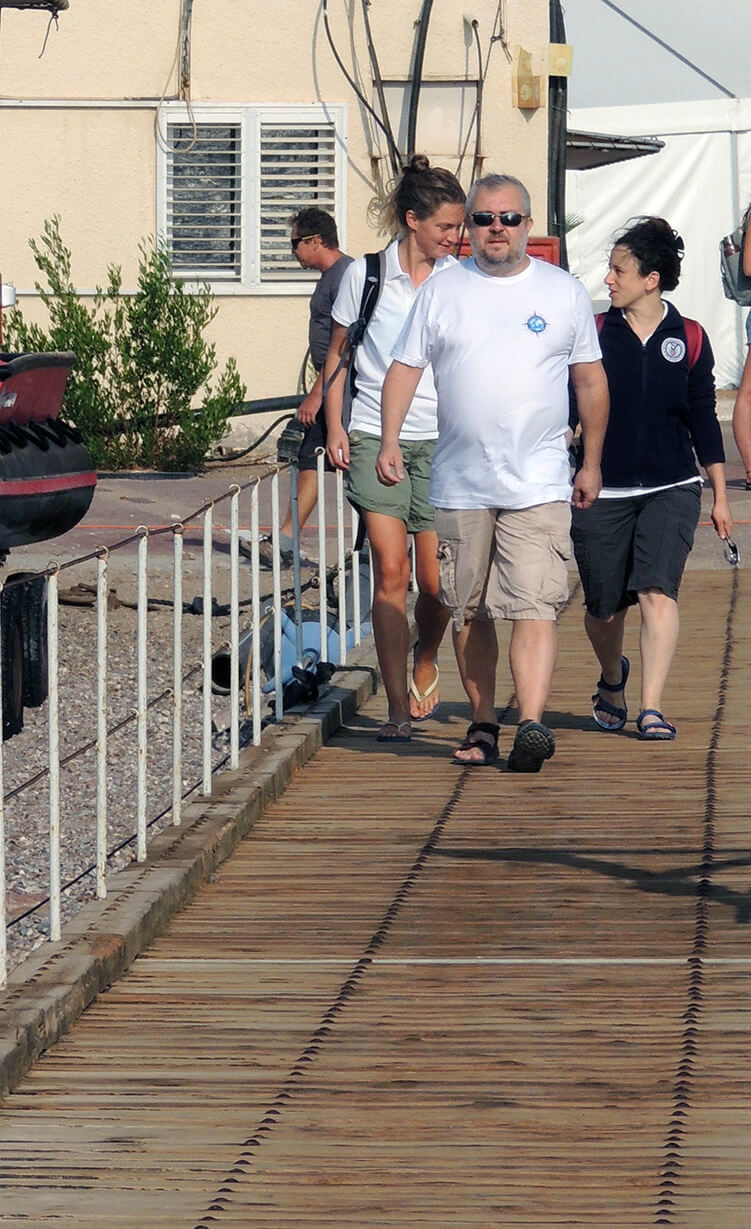
Future research
Offshore operations will be followed by a long period of research and laboratory studies, before the final phase of publication of the results.
The images recorded and the samples taken will be analyzed in detail and will be the subject of various investigations: taxonomy, study of biodiversity, sequencing of deoxyribonucleic acid (DNA), study of response to changes in physico-chemical conditions and temperature.
The ROV's remote-controlled arm harvesting a rare piece of sponge. ©IUM/Explorations de Monaco
Photo gallery
The Sam Rothberg IV anchored in front of the Inter-University Institute.
Eilat.
Marcos Schonholz.
Monaco Explorations.
The oceanographic vessel Sam Rothberg in the Gulf of Aquaba © Amir Friedmann.
The joystick can be used to steer the ROV remotely using the control screen © Marcos Schonholz.
Monaco Explorations.
ROV control screen.
Marcos Schonholz.
Monaco Explorations.
Careful handling of the ROV on deck © Marcos Schonholz.
Monaco Explorations.
Proximity of deep reefs to the coast.
Marcos Schonholz.
Monaco Explorations.
A veritable umbilical cord, the cable links the ROV to the boat and transmits all orders from the control room to the machine.
Marcos Schonholz.
Monaco Explorations.
A magnificent colony of deep soft corals revealed on screen.
© IUI.
Christine and Vanessa manipulate soft corals under blue light © Marcos Shonholz.
Monaco Explorations.